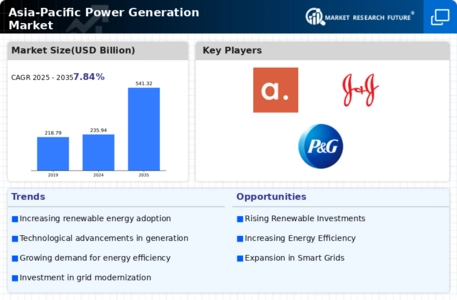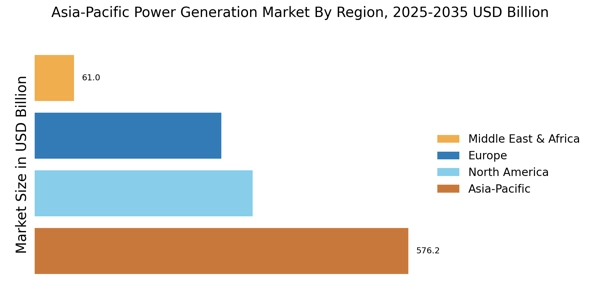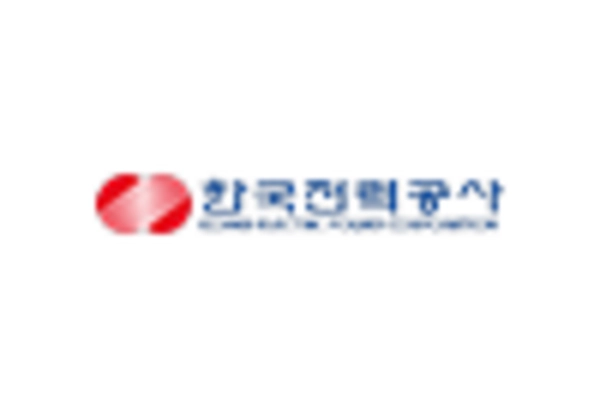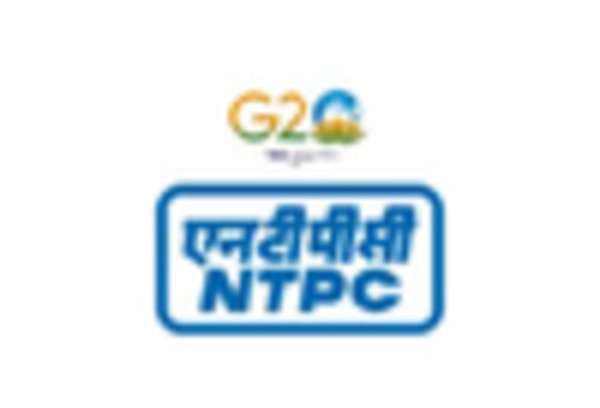Increasing Energy Demand
The Asia-Pacific Power Generation Market is currently experiencing a surge in energy demand, driven by rapid urbanization and industrialization across the region. Countries such as India and China are witnessing significant population growth, which is leading to an increased need for reliable power supply. According to recent estimates, energy consumption in Asia-Pacific is projected to grow by approximately 3.5% annually over the next decade. This escalating demand necessitates the expansion of power generation capacity, prompting investments in both traditional and renewable energy sources. As a result, the industry is likely to see a diversification of energy portfolios, with a focus on sustainable practices to meet future needs.
Technological Innovations
Technological advancements are significantly influencing the Asia-Pacific Power Generation Market. Innovations in power generation technologies, such as advanced gas turbines and solar photovoltaic systems, are enhancing efficiency and reducing costs. The integration of digital technologies, including artificial intelligence and the Internet of Things, is also transforming operational capabilities. For example, predictive maintenance and real-time monitoring systems are being adopted to optimize performance and minimize downtime. As a result, the industry is likely to witness improved reliability and efficiency in power generation, which could lead to a more competitive market landscape.
Focus on Energy Efficiency
The emphasis on energy efficiency is becoming a prominent driver in the Asia-Pacific Power Generation Market. As energy costs rise and environmental concerns grow, both consumers and businesses are seeking ways to reduce energy consumption. Initiatives aimed at improving energy efficiency, such as retrofitting existing power plants and implementing energy management systems, are gaining traction. Reports suggest that energy efficiency measures could potentially reduce energy demand by up to 20% by 2030. This shift not only helps in lowering operational costs but also contributes to the overall sustainability goals of the region, making it a vital aspect of future power generation strategies.
Government Policies and Incentives
Government policies play a pivotal role in shaping the Asia-Pacific Power Generation Market. Many countries in the region are implementing favorable regulations and incentives to promote renewable energy adoption. For instance, nations like Japan and Australia have introduced feed-in tariffs and tax credits to encourage investments in solar and wind energy projects. These initiatives are expected to drive the share of renewables in the energy mix, with projections indicating that renewables could account for over 30% of total power generation by 2030. Such supportive frameworks not only enhance energy security but also contribute to environmental sustainability, aligning with global climate goals.
Investment in Infrastructure Development
Infrastructure development is a critical driver for the Asia-Pacific Power Generation Market. Governments and private entities are increasingly investing in the construction and upgrading of power plants, transmission lines, and distribution networks. This investment is essential to accommodate the growing energy demand and to facilitate the integration of renewable energy sources into the grid. Recent reports indicate that infrastructure spending in the energy sector is expected to reach trillions of dollars over the next decade. Such investments not only enhance energy access but also stimulate economic growth and job creation within the region.


















Leave a Comment